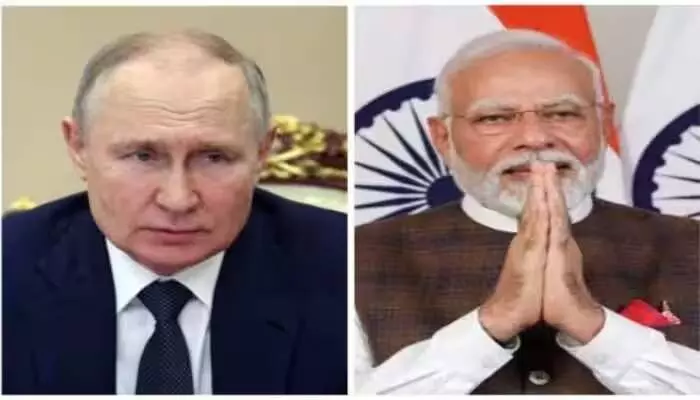India Winds Down Major Russian Defense Deals: INS Tamal, S-400 Mark End of an Era
India ends major Russian defense deals with INS Tamal, shifts focus to self-reliance and AMCA, as S-400 likely marks the last big Moscow purchase.
image for illustrative purpose

India’s long-standing defense relationship with Russia appears to be reaching its strategic sunset. On July 1, 2025, the Indian Navy commissioned INS Tamal, the last warship built in a Russian shipyard, signaling a quiet but decisive shift in India’s military procurement strategy. Part of the Admiral Grigorovich-class, the stealth multi-role frigate will patrol the Arabian Sea—marking both operational readiness and symbolic closure to decades of Moscow-manufactured naval power entering Indian waters.
From Dependence to Self-Reliance
India’s move to domestically build all future major naval vessels underscores a broader shift toward defense self-reliance. The decision aligns with the government’s push for indigenous capability through initiatives like Make in India and signals a confident pivot away from traditional dependency on Russian arms.
S-400: The Last Big Ticket?
The S-400 air defense system remains one of the few remaining large-scale deals with Moscow. India ordered five units—three have been delivered, with the remaining two expected in 2026. However, no new agreements have been signed since. Offers from Russia—including the Su-57 stealth fighter, S-500 missile system, Kalibr cruise missiles, and leased nuclear submarines—have failed to gain traction in New Delhi.
India’s defense establishment is now prioritizing its indigenous Advanced Medium Combat Aircraft (AMCA) project, a fifth-generation fighter being developed domestically. With this focus, even technology transfer provisions tied to the Su-57 are no longer enticing.
A Shift in Numbers—and Allies
The numbers underscore the changing dynamic. In 2009, Russian hardware accounted for 76% of India’s defense imports. By 2024, that share had plummeted to 36%, the lowest in over 60 years. In contrast, defense ties with the United States and France are growing rapidly, with American firms alone clinching nearly $20 billion in contracts since 2018.
Still Friends, But Fewer Deals
This strategic divergence in defense doesn’t imply a total split. Russia remains essential for spares, upgrades, and maintenance across India’s existing fleet of tanks, jets, helicopters, and naval assets. The cooperation continues—just more in terms of servicing than shopping.
Notably, India has significantly ramped up energy imports from Russia, becoming Moscow’s second-largest energy customer as of May 2025, spending over €4.2 billion, mainly on crude oil. This rising trade is drawing attention in Washington, where lawmakers are considering sanctions on nations maintaining extensive ties with Russia.
What Lies Ahead?
India’s current posture reflects a balancing act—maintaining legacy systems with Russian support while decisively turning toward domestic innovation and Western partners for new acquisitions. INS Tamal and the S-400 systems may well be remembered as the last major symbols of India’s historic military partnership with Russia.
A new chapter is unfolding—one focused not on legacy, but on sovereignty, strategy, and self-sufficiency.

